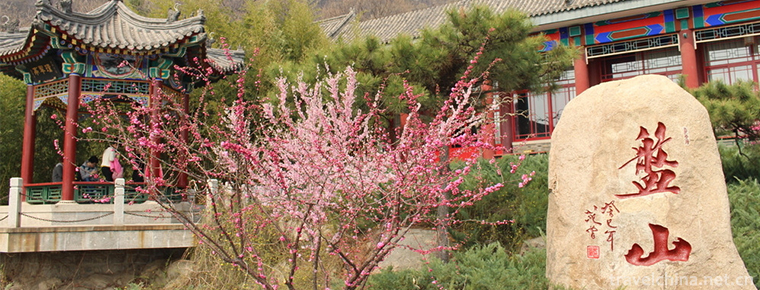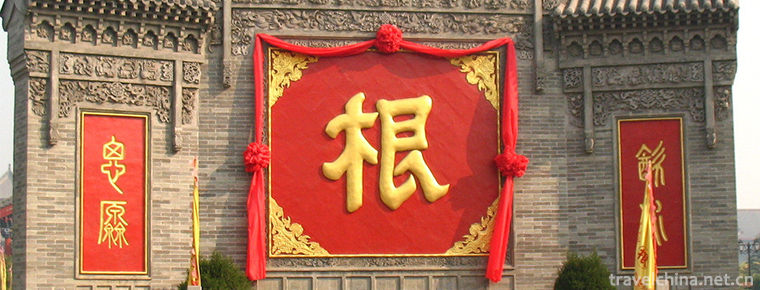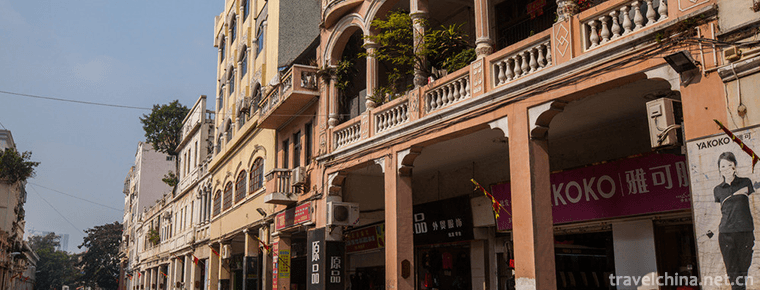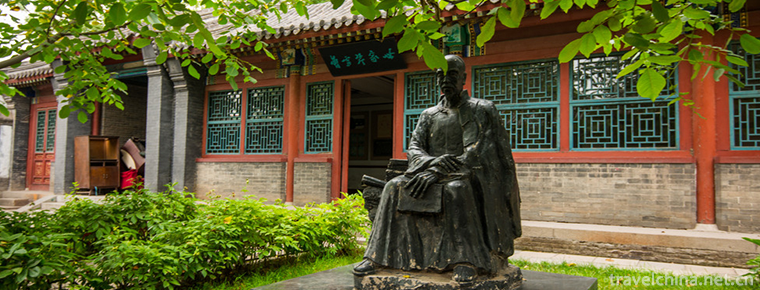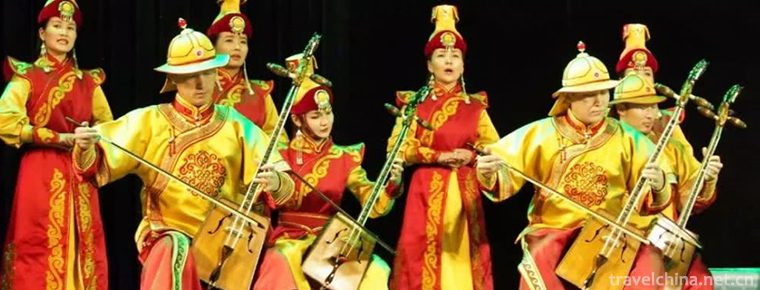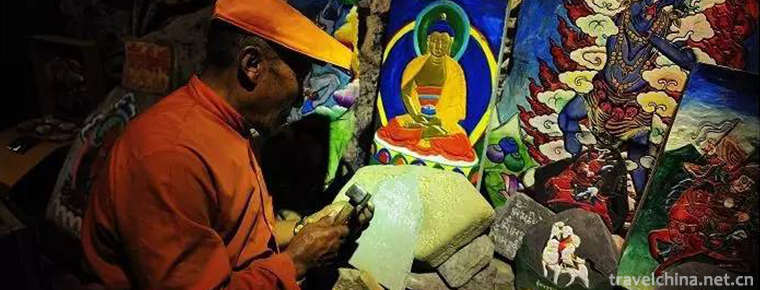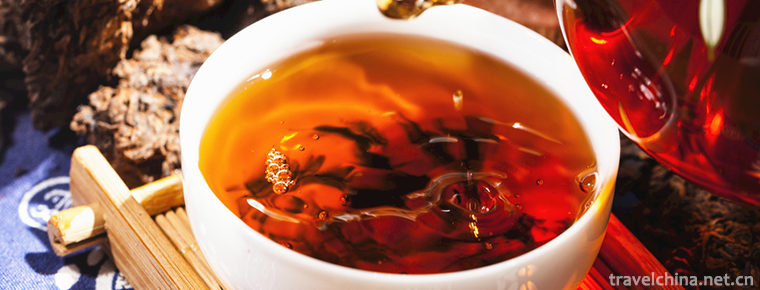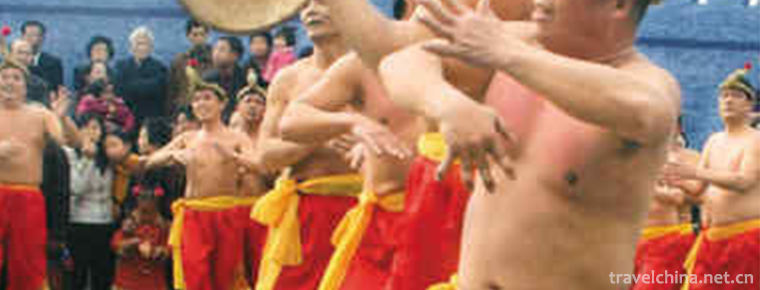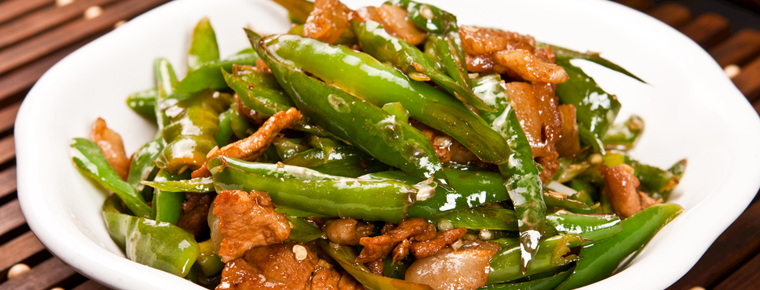Linxia brick carving
Linxia brick carving
Linxia brick carving (also known as Hezhou brick carving) is a practical art closely combined with buildings. Linxia brick carving matured in the Ming and Qing dynasties, and in modern times it absorbed the artistic features of painting and woodcarving, making this folk art form more perfect. On some buildings in Linxia, rich and colorful brick carvings can be seen almost everywhere. Red Garden and Donggong Mansion, located in the southeast of Bafang, are the most concentrated places for preservation of Linxia brick carving art. Many of them are masterpieces by famous experts, which show the unique style and exquisite skills of Linxia brick carving art.
On May 20, 2006, Linxia brick carving was approved by the State Council and listed in the first batch of national intangible cultural heritage list.
Historical origin
Linxia brick carving is a traditional architectural decoration carving in Linxia County. The brick carving ornaments unearthed from the tomb of Wang Ji, a school lieutenant of Jinyi in the fifteen years of Dading in Jin Dynasty, in this county are made of earth kiln green bricks. It can be judged that Linxia brick carving originated from Qin and Han Dynasties and was an extension of the folk woodcarving skills at that time.
According to archaeological excavations, Linxia brick carving art was quite mature in the Song Dynasty. By the Yuan and Ming Dynasties, exquisite brick carving had been widely used in various buildings. The Ming and Qing dynasties were the flourishing period of Linxia brick carving. The "Dragon and Phoenix Chengxiang" shadow wall built in front of the gate of Bafang Mosque in the late Ming and early Qing dynasties can be regarded as the exquisite brick carving in Hezhou. The two sides of the shadow wall are "Phoenix Laiyi" and the middle one is "Meilong Sanxian". Looking at the shadow wall, the shallow relief Meilong appears and disappears. In the clouds and deserts, there are clouds and mists, accompanied by thunder, and the feeling of sudden heavy rain.
Republican China
During the period of the Republic of China, Linxia brick carving artists emerged in large numbers. Among them, old Hui artists blossomed into Yuan and Zhou Shengpu were the most famous. The East Mansion brick carving of Jihezhou brick carving was the artistic crystallization of Blossoming Yuan. The "Taishan Sunrise Picture" on the southern side of Linxia Red Garden pavilion was Zhou Shengpu's masterpiece. Some new large-scale brick carvings, such as Yuba Gongbei, Dagongbei and Hongyuan Square, show the exquisite skills of the new generation of brick carving artists in Hezhou.
liberate
In the early period of liberation, many excellent works emerged in Linxia brick carvings, among which Hongyuan and Dagongbei were the most concentrated. Taishan Sunrise Picture on the South Side of the Red Garden Pavilion, using traditional Chinese painting techniques, depicts two towering peaks confronting each other, the middle stone path is dangerous, and the pagoda stands tall, which makes the viewer feel immersed in the scene. A frame of "Pomegranate Double Happy Picture" on the north side of the pavilion is exquisite, lovely, the branches of pomegranate trees are luxuriant, fruits are abundant, and a pair of magpies seem to have tasted the Pearl resemblance. The pomegranate is lifting a paw to wipe off the residual juice from its sharp beak. The brilliant conception and exquisite sculptor vividly reproduce the vivid picture and vivid interest on several green bricks, which is amazing.
Now Linxia brick carving has entered its heyday. Brick carving artists have sprung up, and brick carving works have sprung up like bamboo shoots. New forms of cement carving have also appeared on the walls of newly built monasteries and the doors of affluent families.
folk culture
Linxia brick carving, a traditional folk art in Linxia, Gansu Province, has a long history. At the end of Qing Dynasty and the beginning of Republic of China, skillful craftsmen emerged and absorbed the artistic features of painting and Woodcarving in modern times, making this folk art closely integrated with architecture more perfect and exquisite. Linxia brick carving process is divided into "kneading" and "carving" two kinds. "Kneading" is made of clay mud processed and prepared, and patterns of dragon, phoenix, lion and various flowers, birds and insects are made by hand moulds, and then baked.
Linxia Hui Autonomous Prefecture, located in the central and southwest of Gansu Province, is the only way from the Central Plains to Qinghai, Tibet and Sichuan since ancient times. It is part of the world-famous Silk Road. There are Han, Hui, Tibetan, Dongxiang, Sarah, Baoan, Tu and other nationalities, forming a unique and colorful folk culture. Linxia City, the prefecture capital of Linxia Hui Autonomous Prefecture in Gansu Province, is situated on the Bank of Xia River in Longnan. The architectural brick carving art here has formed a unique style which takes Hui as the main body and integrates other ethnic traditions. Into Linxia, all classical buildings, whether Hui's worship hall or Han's community temple, whether the former official and noble residences, mansions, or ordinary people's homes, are mostly decorated with exquisite brick carvings.
artistic characteristics
Over the past thousand years, Linxia brick carving has been constantly bringing forth new ideas through the old. It has lasted for a long time. In modern times, it has absorbed the advantages of painting and woodcarving and gained greater development. It is widely used in temples, gardens and residential buildings. The decorative parts are shadow walls, barriers, gates, coupon doors, ridges, walls, ridges and mountain flowers. Brick carvings have a wide range of styles, mostly with good wishes as the content, including pines, cypress, plum orchid, bamboo chrysanthemum, wonderful grass and gorgeous flowers; there are pine cranes, magpies, birds, squirrels, cypress deer; more are imitation wooden dogfight arch, sparrow substitution, purlin rafters, curly grass, pattern and so on. The forms of expression are rich and colorful, some are magnificent, some are elegant and generous, the meaning of the painting is profound.
The finished brick carvings are mainly used to decorate the deep houses and courtyards in temples, temples, temples, temples, nunneries and dwellings. They are generally used in patios, gables, shadow walls, corridors, Danxue, steps, lower sills, dukes, beards, roofs, etc. The carvings can be divided into natural scenery, social life and decorative patterns with national characteristics. In the process of development, Linxia brick carving absorbed wood carving, stone carving, jade carving and other carving techniques. At the same time, attention should be paid to the integration of traditional Chinese painting, calligraphy, seals, poetry and brick carving techniques to form a pluralistic artistic feature, which not only retains the simplicity and simplicity of the unique materials, but also presents a variety of artistic features.
Now in Linxia, you can see many precious brick carvings. Earlier, there was a Ming Dynasty brick sculpture "Three Views of Black Dragon" on the screen wall of the Eight Squares Huaqing Temple of Linxia Mosque. In addition, the East Mansion, located in the east of Sandaoqiao, Bafang, Linxia City, is a gathering place of Linxia brick carvings. There are hundreds of brick carvings with different sizes on the walls, corridors and pillars of the courtyard. Among them, there are more than 10 independent paintings such as "Grape Picture", "Peony Picture", "Lotus Picture", "Maple Leaf Autumn Chrysanthemum Picture", "Banana Picture", "Bamboo Moon Picture" and "Pine Moon Picture". The most famous one is "Jiangshan Picture" on the front wall of the central Tianting Court. The famous "Mountain Village Scenery" is composed of 24 bricks, 7 cm thick and 25 cm wide. It is 2.8 meters long and 2 meters high. The whole picture is magnificent and has a profound artistic conception. It is a rare masterpiece of brick sculpture.
Linxia brick carving can be divided into kneading and carving in terms of production technology. The so-called kneading, first is carefully blended, prepared clay mud, hand and mold kneading into various shapes, and then roasted into the kiln. Most of these works are independently shaped, such as dragons, phoenixes, unicorns, etc. They are mostly used on roofs, commonly known as "ridges". The so-called carving is to carve various patterns on selected fired green bricks with a carving knife. Its process is much more complicated than kneading. A pattern is often stitched together by more than a dozen or even dozens of green bricks, carved on clay kiln sponge bricks with a knife, and used in building wall decoration, steps and so on. The carving process includes eight procedures, such as grinding, composition, carving, fine grinding, over-water, numbering, splicing and installation, decoration, etc. The tools for making are folding rulers, saws, planers, shovels, chips, cutting knives and so on. The shovels, chips and cutting knives are divided into several kinds according to the process requirements, such as weight, size, length, width and thickness of the edge.
Linxia brick carving adopts the technique of combining carving and hollowing, or round carving or semi-round carving, to make it jump out of the picture, with distinct layers and strong three-dimensional sense. Secondary parts and backgrounds are treated by relief. In terms of conception, we should combine realism with Romanticism, place our emotions on the scenery and blend the scenery.
Its engraving techniques mainly include Yin line engraving, concave line engraving, convex line engraving, shallow relief, high relief, hollow through engraving and so on. This is the essence of the art of brick carving in Linxia. A brick carving often consists of three or four layers of patterns, which are overlapped and folded, and breathe in and out. The brilliant conception and exquisite sculptor vividly reproduce the vivid picture and vivid interest on several green bricks, which is amazing. Now the main inheritors of Linxia brick carving are Zhou Jingde, Blooming Xueren and so on.
In Linxia, as a kind of building material, brick carvings are mostly inlaid under the eaves of the side wall or the front wall of the gable and in the middle of the shadow wall of the courtyard. Some of them are built on the roof ridge, and are specially used to decorate the brick wall. Linxia brick carvings not only have independent ornamental value, but also integrate with the whole building. They are elegant, elegant, elegant and elegant, with a strong interest in life, as well as a strong imagination and expression.
Process standard
Linxia brick carving has been officially released as the local standard of our province after the evaluation of experts from provincial tourism bureau, provincial arts and crafts quality inspection station and Linxia Quality and Technical Supervision Bureau. It is also another traditional craft standard of Linxia after the local standard of carving gourds, security knives and off-season peony in Linxia was formulated. The implementation of this standard will play a greater role in protecting local traditional crafts and enhancing the competitiveness of national brands.
It is understood that Linxia brick carving has a long history and is the traditional folk art in Linxia area. In 2006, it was listed as the first batch of national intangible cultural heritage list. Linxia brick carving absorbed the art of painting and woodcarving. It used relief, carving, high relief, plane carving, hollow carving and other techniques to cut, hook, cut, chisel and cut bricks into decorative brick wall. Craft works of walls and furnishings.
representative figure
Linxia Hui brick carving in the development of several artistic elite. The brick sculptures in Linxia East Mansion, regarded as Gansu's "Brick Carving Collection", were created by famous Hui brick carving artists. Blooming Chengyuan was born in Qijiazhuang, Linxia, in 1903 and died in 1980. He was smart, skillful and fond of Danqing. After that, he was accepted as an apprentice by the famous brick Carver Ma Younus. He learned brick carving skills and soon became famous. He was known as "the God craftsman of Ma Men". He and his disciples carved various kinds of brick carvings for Ma Buqing's official residence, making it an art palace of brick carvings. Blooming Chengyuan is not only good at brick carving, but also good at architectural design. In his later years, he created cement sculpture, which opened up broad prospects for the use of modern building materials to develop brick carving skills.
Zhou Shengpu, another famous Hui brick carving artist, is the author of the famous brick carving "Lotus Tu" and "Songyue Tu" in Dagongbei. Zhou Shengpu, a native of Daxiguan, Linxia, was born in 1908 and died in 1988. He was born into a brick carving family. In his twenties, Zhou Shengpu was renowned for his outstanding skills. Zhou Shengpu's early works were mostly destroyed. After liberation, he carved bricks for Dagongbei and Hongyuan. He skillfully blended calligraphy, painting and sculpture, and creatively carved many excellent works of art, forming a unique style of brick sculpture "Zhou School". His representative works include Landscape Map, Peony Map, Cuizhu Map, Lotus Map and Songyue Map.
Today there are still many artists in Linxia brick carving. On behalf of Linxia brick carving exhibited at the 100th Canton Fair and paid attention to by the national leaders, "Bogujia" was produced by Shen Zhanwei, a famous brick carving artist in Linxia. Shen Zhanwei, Han nationality, Linxia suburban town, born in 1968, loves painting and brick carving art since childhood. He carefully studied the brick carving works of the master of art, and worked hard under the guidance of Shen Jiaan, an old artist who cooperated with the master of art, to gradually form his own style. His works are concise, concise, delicate and skillful, pursuing the harmony and unity of form and content, with implicit theme, profound implication and wide range of themes. Therefore, he is also rated as the only peasant brick carving artist with the Vice-Senior title in the whole state. In addition, Shen Zhanwei has been innovating and developing new technologies, and many of his works have been collected by national and provincial museums.
One of the aforementioned famous brick carving corridors in Linxia Red Garden is Mu Yonglu, a famous brick carving artist. Mu Yonglu, a Hui native of Maoyuan Village, a suburban town of Linxia, was born in 1952 and is the third generation of the Blooming School of brick carving. His works are rigorous in conception, ingenious in drawing and meaningful and elegant in style. In the past 28 years, Mu Yonglu has devoted himself to the inheritance and development of the "Blooming School" of Linxia Brick Carving, enrolled a wide range of disciples, and led the establishment of Hezhou Brick Carving Art Company. His large brick sculpture "Longyuan Scenic View" was exhibited in the "99 Kunming World Expo", which made Linxia brick sculpture enter the national exposition for the first time. At the same time, he also carved bricks for many famous buildings around the world. Mu Yonglu's goal is to let the ancient Hezhou brick carving go out of Linxia, out of Gansu and into the whole country.
Inheritance significance
Now Linxia brick carvings are mostly magnificent, quiet and simple. Although some brick carvings have gone from relief type to hollow-out type, there are three layers of decoration inside and outside, they have lost the simple lines and flickering charm of the past.
Nevertheless, Linxia brick carving, as a kind of historical folk craft, has always combined realism with Romanticism in its creative techniques, focusing on scenery and blending scenery, expressing the working people of all nationalities'love for the magnificent mountains and rivers of the motherland, their yearning for and pursuit of a better ideal and happy life, and also demonstrating the superb wisdom and exquisite of the working people. Artistic skills.
Nowadays, the traditional brick carving technology has lost its market. Many practitioners lack the traditional brick carving technology and basic artistic accomplishment. There is a serious phenomenon of "dating" in brick carving technology. The modern assembly line production mode of sectional production will also lead to the inconsistency of the style of brick carving works and lack of individual expression and vivid charm. In this situation, it is necessary to take specific measures to rescue and protect the traditional skills of Linxia brick carving.
The state attaches great importance to the protection of intangible cultural heritage. On May 20, 2006, the intangible cultural heritage was approved by the State Council and listed in the first batch of national intangible cultural heritage list.
Prospects for development
Linxia brick carving art has been neglected for 30 years since the founding of the People's Republic of China to the "Cultural Revolution". With the deepening of policy and the development of market economy after the reform and opening up, Linxia brick carving has entered a recovery period. However, at this time, there is a phenomenon of art endangerment.
First of all, the inheritance of sculpture art is facing the threat of "dating", and there are few successors. Mainly because of the poor environment, difficult conditions, high physical consumption and relatively low income of brick carving skills, even if the descendants of the master engaged in this art is not many, resulting in the current rare shortage of brick carving talents.
Secondly, brick carving practitioners lack basic artistic literacy. Brick carving is a kind of work that combines knowledge and labor closely. It requires artists to have both the art foundation of painting and calligraphy needed to engage in this industry and the carving skills. However, the current situation is that this process is divided into "pipeline" operations, which destroys the unity and coherence of works.
Thirdly, brick carvings lack the artistic value they deserve. Because of the development of the market of classical architecture industry, some brick carving artists roughly make brick carving works to cater to the market demand for their interests, which depreciates the artistic value of brick carving and damages the market reputation of Linxia brick carving art brand to a certain extent.


-
Tianjin Panshan Scenic Area
Tianjin Panshan Scenic Area, located 15 kilometers northwest of Jixian County, Tianjin City, covers an area of 106 square kilometers.
Views: 188 Time 2018-11-24 -
Hongtong Dahuaishu Ancestor Memorial Garden
Located in Hongdong County, Shanxi Province, Hongdong Dahuashu ancestor-seeking scenic spot is the only national sacrificial site with the theme of "root-seeking" and "ancestor-sacrific.
Views: 213 Time 2018-11-24 -
Haikou Arcade Street
The old arcade street in Haikou is one of the most distinctive Street landscapes in Haikou. Four of the oldest buildings were built in the Southern Song Dynasty.
Views: 231 Time 2019-02-07 -
Rong Guo Fu
Rongguofu, located in Zhengding County, Shijiazhuang City, Hebei Province, is a group of archaized buildings with the culture of the late Ming and early Qing Dynasties as the background. In 1986.
Views: 194 Time 2019-02-07 -
Asil Lysi
"Asr" is the abbreviation of "Asru Winder" in Mongolian, and its translation is of great significance. Asr is a kind of Mongolian court music, which has a unique national style and.
Views: 218 Time 2019-03-28 -
Tibetan Gesar Painted Stone Carvings
Tibetan Gesar painted stone carvings belong to a relic of Chinese Tibetan Gesar culture. They are mainly distributed in Seda, Shiqu and Danba counties in Ganzi Tibetan.
Views: 114 Time 2019-04-06 -
Production Techniques of Black Tea
Qimen Black Tea is the only black tea among the top ten famous teas in China. It is produced in Qimen County, Anhui Province. Tea production in Qimen has a long history, which can be.
Views: 142 Time 2019-05-03 -
Traditional Brewing Techniques of Brewing Wine
Chrysanthemum wine is a necessary drink for Chongyang Festival. It has a long history of brewing. Royal chrysanthemum liquor of Ming and Qing Dynasties was a kind of precious liquor created on the bas.
Views: 140 Time 2019-06-09 -
Quanzhou breast clapping dance
Breast-clapping dance, also known as chest-clapping, seven beats, flower-clapping and beggar dance, is a traditional dance originating in Quanzhou, Fujian Province. It is widely spread in Quanzhou cou.
Views: 130 Time 2019-06-11 -
Fried meat with chili
Stir fried meat with chili is a dish made with chili and streaky pork as the main ingredients and soybeans, garlic seeds, soy sauce, oil salt, monosodium glutamate and ginger as auxiliary ingredients..
Views: 212 Time 2020-03-18 -
Panzhihua after liberation
After liberation, Miyi County was established in some areas of Huili and Dechang in 1951, and renamed as Miyi County the next year, which was subordinate to Xichang District of Xikang province (due to its unique climate, rich products, especially rich in rice, and three crops a year, .
Views: 136 Time 2020-12-14 -
Plant resources in Yibin
Yibin City belongs to subtropical evergreen broad-leaved forest area, with rich plant species and diverse vegetation types. There are 435 species of arbor and shrub plants, 205 genera, 86 families, 59 species of bamboos, and 310 species of landscapi.
Views: 291 Time 2020-12-18
